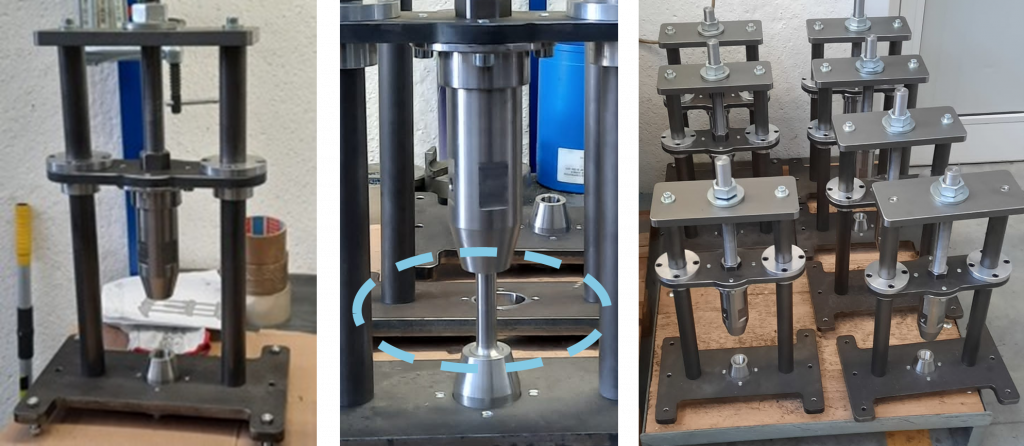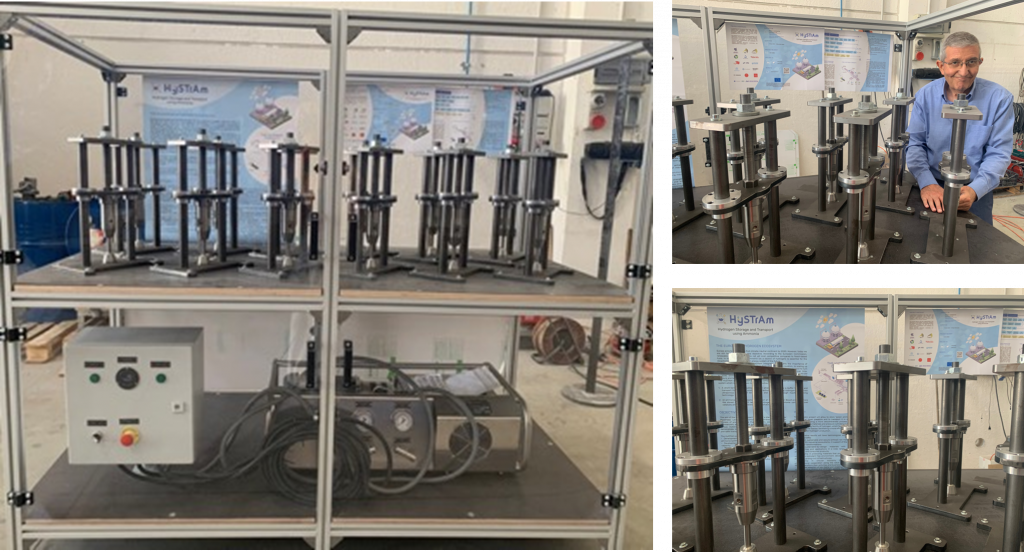Testing the resistance of cost-efficient alloys
February 27, 2025

In the framework of the HySTrAm project, Gas Vessel Production (GVP) aims to demonstrate the physico-chemical compatibility of GVP’s hydroformed metal liner material with hydrogen and MOF. For this purpose, GVP has designed lab equipment to test the resistance of cost-efficient alloys of the AISI 300 family to hydrogen embrittlement, simulating the same operation conditions as in the real hydrogen storage application.
GVP aims to test the cylinder’s liner material embrittlement under conditions as close as possible to real-world hydrogen applications. Within the AISI stainless steel family suitable for GVP’s hydroforming process, only 316L is currently approved for high-pressure hydrogen applications—but it comes with a high price tag. To overcome this economic barrier and optimise the cost of our novel high-pressure storage solution, GVP conducted extensive hydrogen embrittlement testing on several AISI 300-series alloys. As a result, we identified and qualified AISI 304L as the most suitable and cost-efficient alternative—enabling the economical production of large-volume hydrogen storage cylinders using GVP’s patented manufacturing technology.
In this context, GVP has redesigned the testing apparatus to conduct high-pressure tests with pure hydrogen, precisely simulating real application conditions. The equipment and specimens tested recreate the exact pressure conditions with the same material stress levels that will occur during actual high-pressure operation of the cylinders. The specifically designed testing system is able to simultaneously test up to 12 specimens of different types of material and is able to test the material not only under pressure up to 750 bar but is simultaneously able to subject the specimen to different tensile mechanical stresses.
At the moment, the tests have demonstrated cylinder liner materials performance and compatibility with hydrogen at high pressures. The aim of the test is to select the best materials and/or alloys to ensure safe, durable and most cost-efficient application of high-pressure cylinders and to demonstrate the compatibility of cylinder liners which must contain both MOF substances and hydrogen at pressures above 100 bar.

Lab testing equipment for liner material embrittlement tests.
The figures above illustrate the assembled testing equipment designed to assess the embrittlement of materials intended for the future construction of the cylinders.

The assembled Lab testing equipment for liner material embrittlement tests.
Then, there are frames in the upper part that allow to insert and put under tension each individual test tube which then pressurised with hydrogen.
At the end of the tests, the specimens will be taken to the breaking point, and the experimental data will be compared with results from identical specimens that were not subjected to hydrogen stress pressure. Through this test, GVP has demonstrated that cylinder liners can contain hydrogen under pressure indefinitely without any risk of embrittlement.
 SHARE ON
SHARE ON